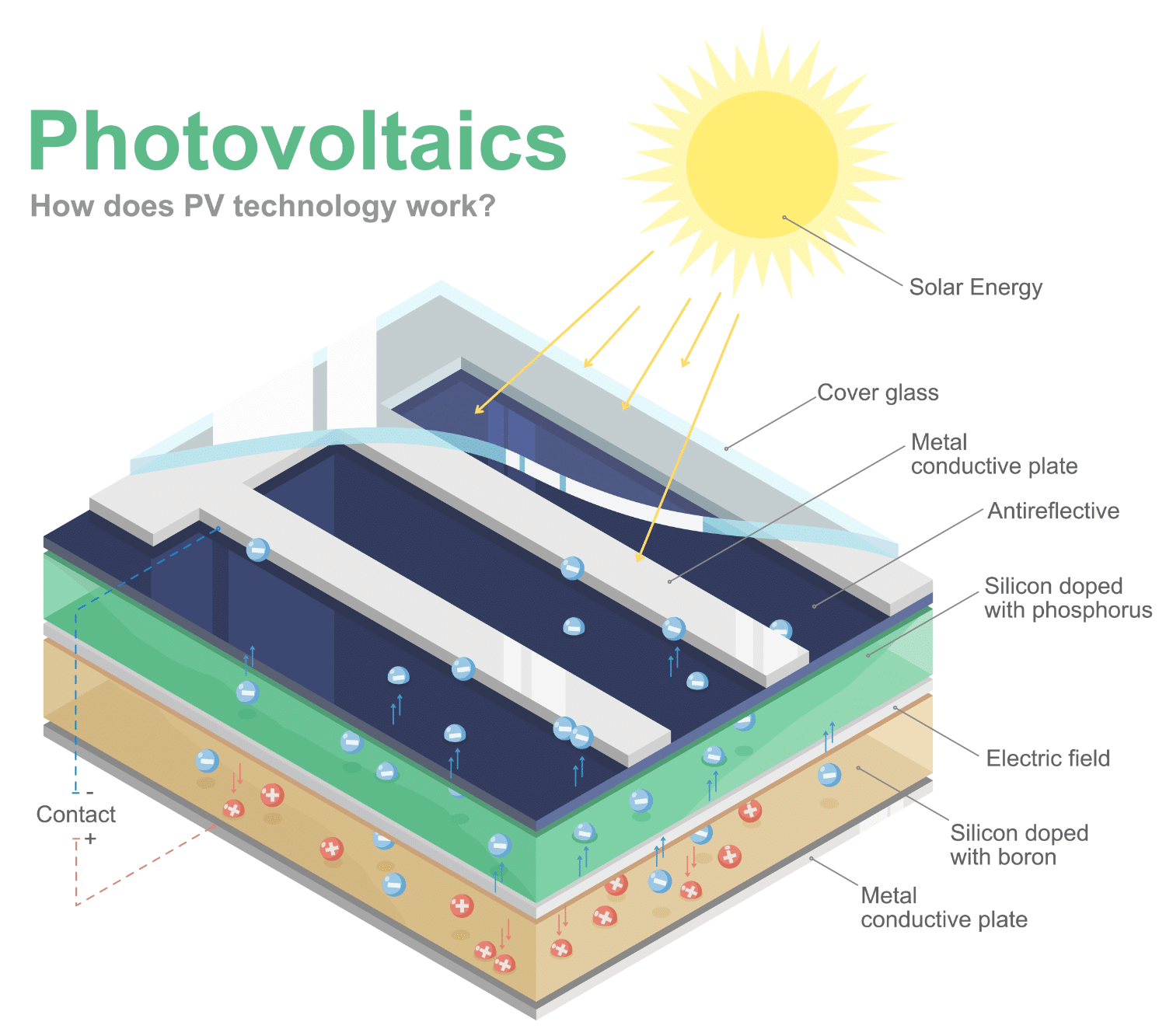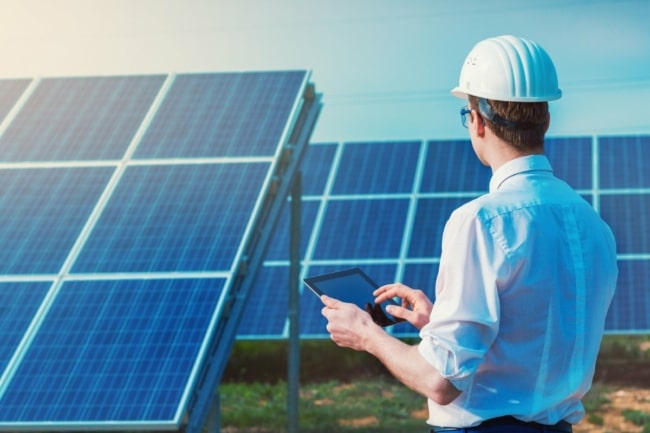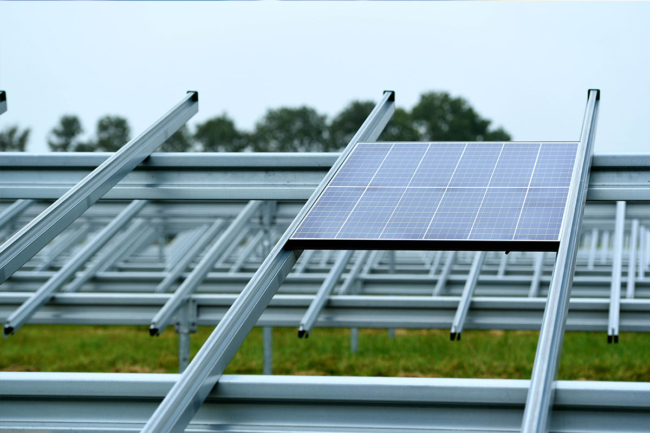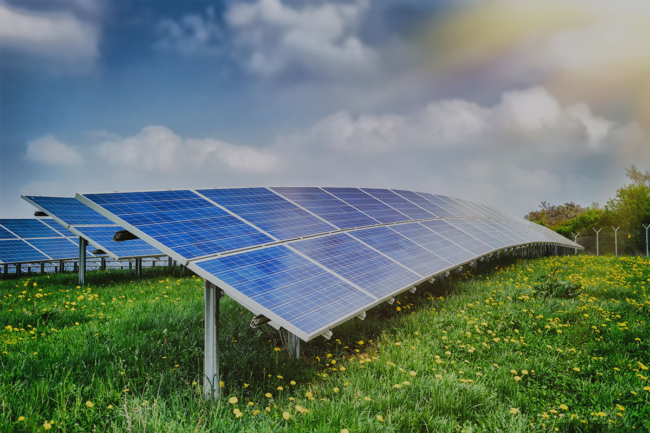Solar Farm Design Services and Development

How Do Solar Farms Work?
Solar farms generate electricity by harnessing sunlight on a grand scale. They employ either photovoltaic (PV) technology or concentrated solar power (CSP) systems to transform sunlight into electrical energy. Here’s a breakdown of how each type operates:
The Rise of Solar Power
The solar energy landscape has evolved dramatically since the first 1 MW solar park was built by Arco Solar in California in 1982. Today, solar power has become much more affordable, prompting businesses and homeowners alike to adopt solar panels to reduce electricity costs and increase self-sufficiency. With significant advancements in solar technology, Venture Steel is well-equipped to meet any demand, facilitating the deployment of solar solutions that cater to a variety of energy needs.
What are the different types of Solar farm?
Photovoltaic (PV) Solar Plants
PV solar plants consist of arrays of solar panels made from semiconductor materials such as silicon. The operation of a PV plant involves several key steps:
Capture of Sunlight:
Solar panels absorb sunlight, specifically the ultraviolet rays. When photons from sunlight strike the semiconductor material in the panels, they transfer their energy to electrons.
Inverter Conversion:
The DC electricity is converted into alternating current (AC) using inverters, which is the standard form of electricity used in homes and businesses. Types of inverters include string inverters, micro-inverters, and hybrid inverters, each offering unique benefits. Find out more about Solar Panel Inverters.
Generation of Electricity:
This energy transfer excites the electrons, creating a flow of direct current (DC) electricity. Large arrays of panels are used to generate significant amounts of power.
Transmission and Distribution:
The AC electricity is then sent to a transformer to be stepped up to a higher voltage for efficient transmission and distributed through the power grid. Solar farms can also allow property owners to sell excess electricity back to the grid.
Types of Photovoltaic (PV) Arrangements
Each type of solar system offers different benefits and is suited to varying environments and energy needs. Understanding these systems is crucial for anyone looking to invest in or design a solar farm.
Ground-Mounted PV Solar:
These installations are typically located in open fields or deserts and are designed for utility-scale power generation. We are proud to offer swift production on ground mounted designs, we can have you from empty field to an operational commercial or residential solar farm in 2 weeks.
Rooftop PV Solar Plants:
Installed on the rooftops of residential, commercial, or industrial buildings, these systems provide on-site power, reduce grid dependence, and can contribute excess power back to the grid through net metering.
Agrivoltaics:
This innovative approach combines agriculture with PV technology, integrating solar panels with agricultural or grazing lands to optimize land use and create synergies between crop production and energy generation. Find out more about Agrivoltaic Farming.
Benefits of Utilising Solar PV Plants
-
Environmentally Friendly:
Solar plants generate significantly lower greenhouse gas emissions compared to fossil fuels, helping to combat climate change and enhance air quality.
-
Energy Independence and Security:
Solar energy provides regions with greater energy autonomy, reducing reliance on imported fuels and mitigating associated geopolitical risks. This is particularly pertinent in regions like the UK, where energy uncertainty could lead to supply disruptions.
-
Cost-effectiveness:
The cost of solar technology has decreased due to advancements in manufacturing and economies of scale, making solar installations an economically viable option. The average return on investment from solar energy is impressive, further enhanced by potential government tax incentives and clean energy rebates.
-
Renewable and Sustainable:
Solar energy, a clean and inexhaustible resource, reduces dependence on finite fossil fuels and supports sustainable energy initiatives.
-
Job Creation and Economic Growth:
The solar sector has the potential to generate numerous jobs and stimulate economic growth through various phases of manufacturing, installation, and maintenance.
-
Scalability and Modular Design:
Solar technology's modular nature allows for installations of varying scales, from small residential setups to large utility-scale projects, adaptable to diverse energy demands.
-
Off-grid Power Solutions:
Solar plants paired with energy storage systems can provide essential power solutions in remote or underserved areas, improving living conditions and supporting local development.
Concentrated Solar Power (CSP) Plants
What are CSP Plants?
Concentrated Solar Power (CSP) plants are less common compared to photovoltaic systems due to their need for larger land areas. CSP plants harness solar energy through mirrors or lenses that concentrate sunlight onto a central receiver, generating heat. This process requires precise calculations and adjustments to ensure optimal heat concentration from the solar panels to the central receiver.
How Do CSP Plants Work:
1. Solar Concentration:
Mirrors or lenses track the sun's movements, focusing sunlight onto a receiver. This intense concentration significantly raises the temperature at the receiver.
3. Steam Generation:
The heated fluid produces high-pressure steam, which drives a turbine. The turbine, in turn, powers a generator.
2. Heat Transfer and Storage:
The receiver absorbs the concentrated sunlight, transferring heat to a fluid such as molten salt or oil. This heat-transfer fluid can store the heat, enabling electricity generation even when sunlight is not available.
4. Power Generation and Distribution:
The electricity produced is transformed to higher voltages and distributed through the grid, meeting consumer energy needs.
The Role of CSP in Renewable Energy:
CSP and PV plants both play crucial roles in advancing renewable energy, reducing dependence on fossil fuels, and cutting greenhouse gas emissions. The choice between CSP and PV typically depends on the project's location, available resources, and specific energy requirements.
Parabolic Trough Systems:
Utilise curved mirrors to concentrate sunlight onto a receiver tube running along their focal line, heating the fluid within to generate steam.
Solar Power Tower Systems:
Feature a central tower that collects sunlight reflected from an array of surrounding mirrors (heliostats), which heats a fluid to produce steam.
Dish Stirling Systems:
Employ large, dish-shaped mirrors focusing sunlight onto a receiver containing a Stirling engine. This engine uses the temperature difference created to generate mechanical energy, which is converted into electricity.


